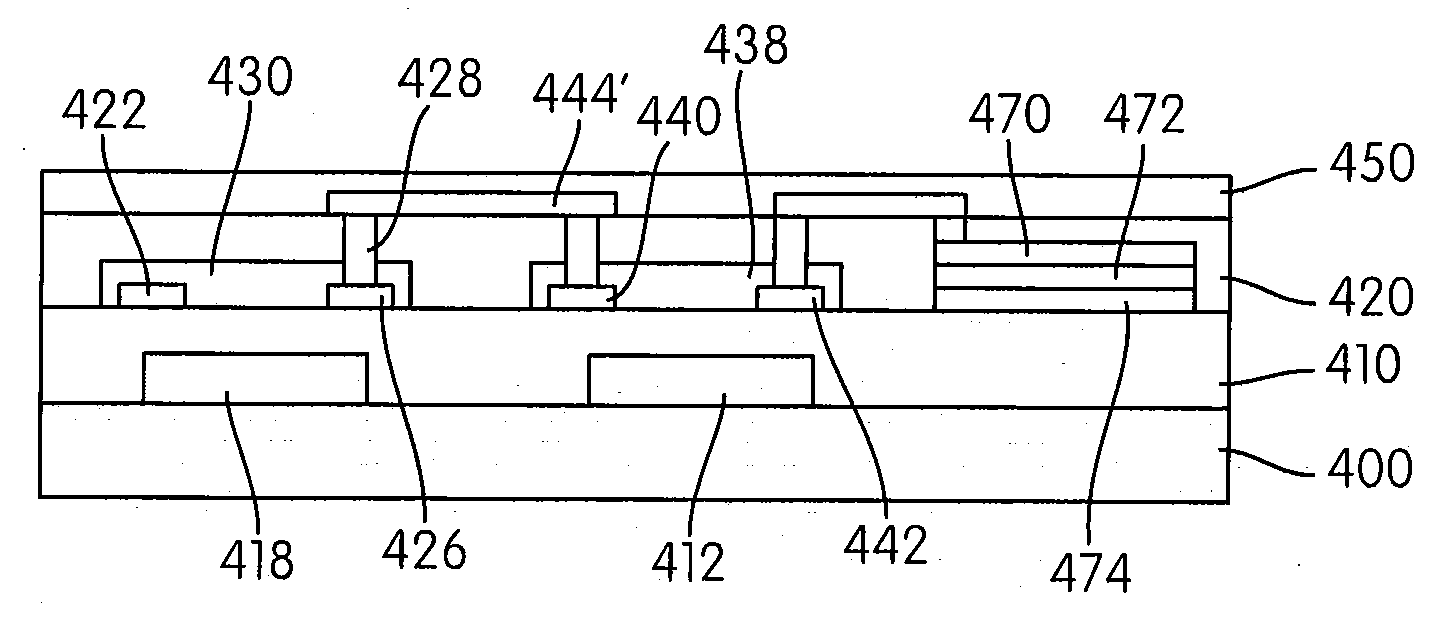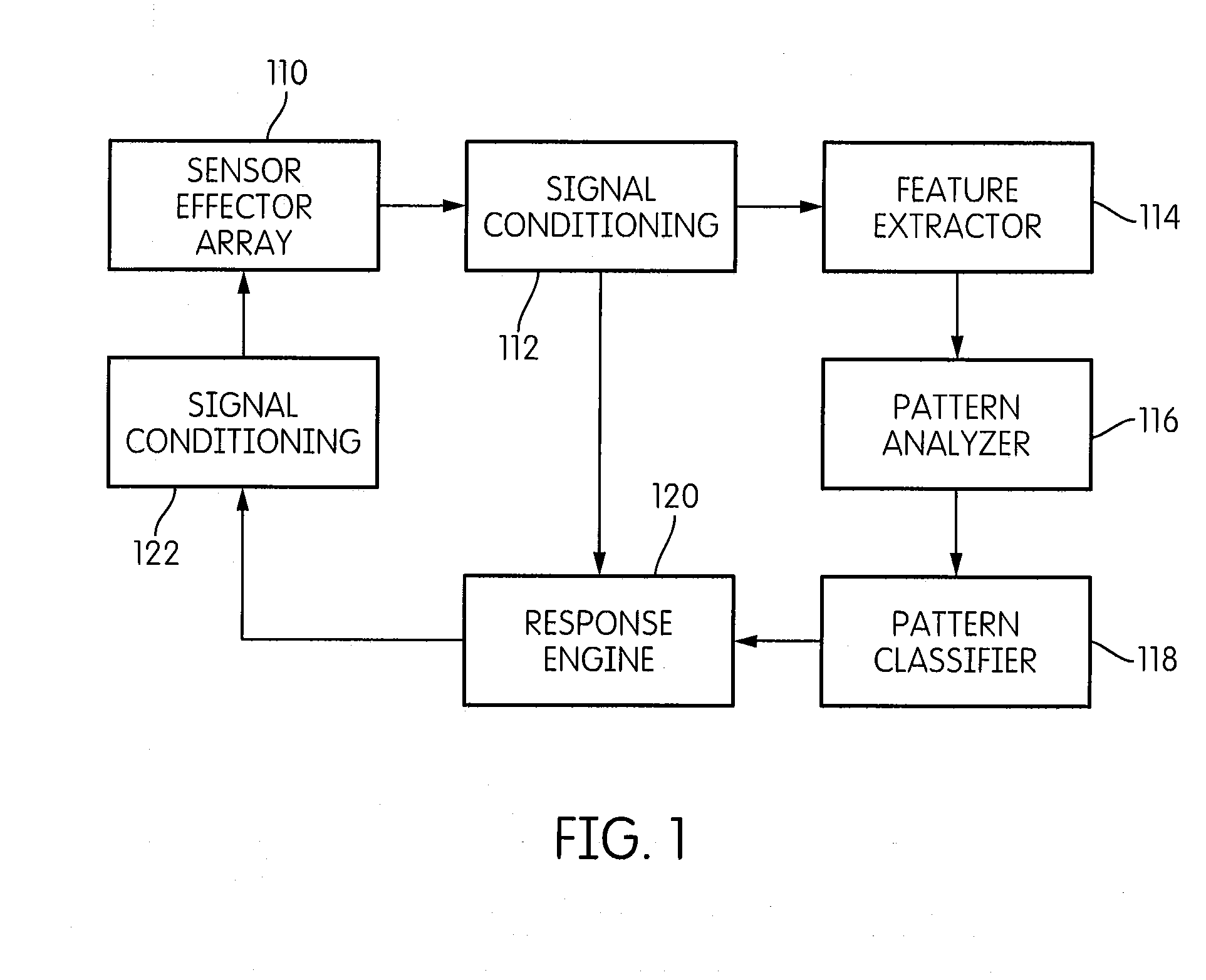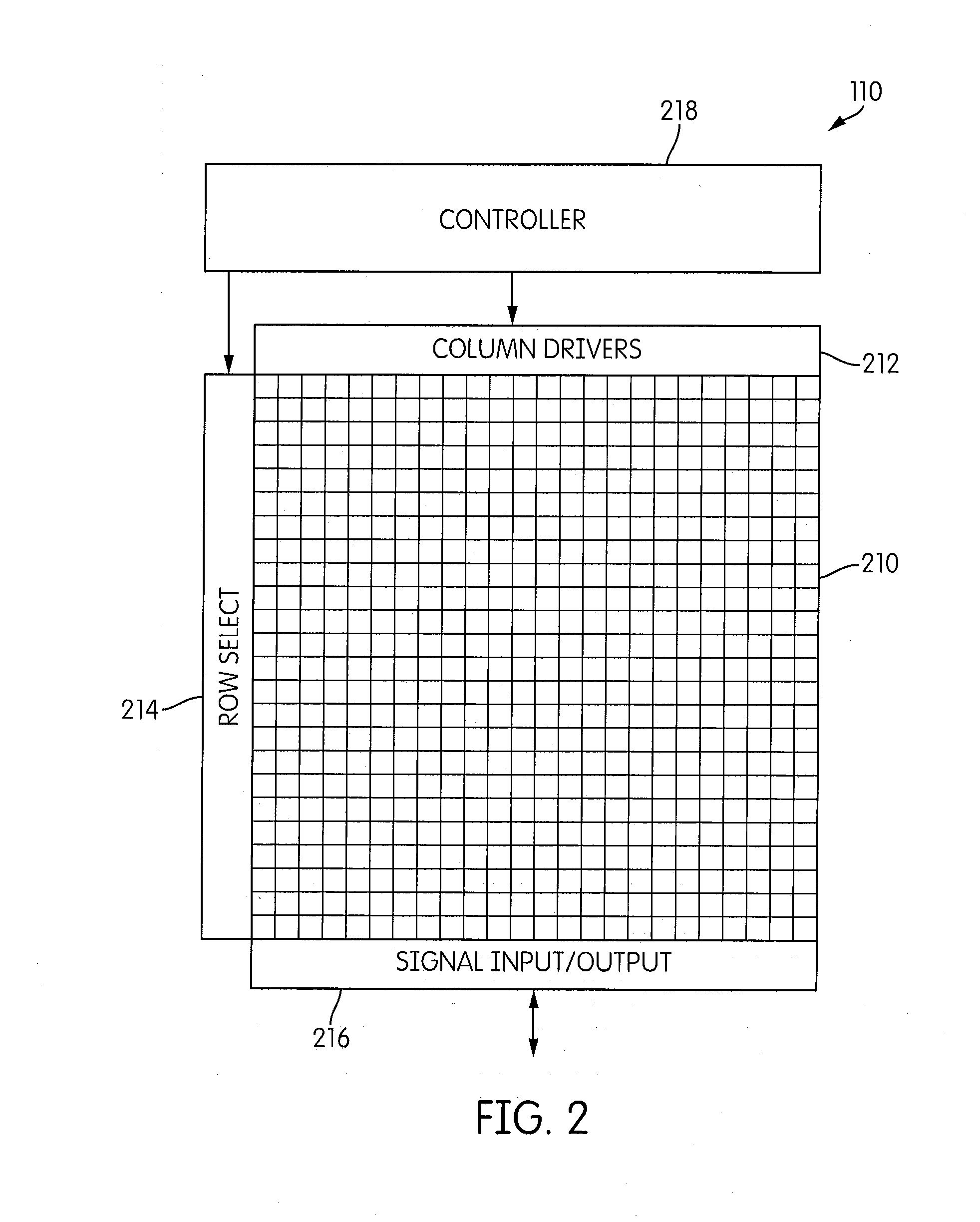Self-adaptive bio-signal and modulation device
a biosignal and modulation device technology, applied in the field of self-adaptive biosignal and modulation devices, can solve the problems of not being able to access, not being able to interact with the brain's native neuroplasticity, and being incapable of self-reorganization and repair
- Summary
- Abstract
- Description
- Claims
- Application Information
AI Technical Summary
Benefits of technology
Problems solved by technology
Method used
Image
Examples
Embodiment Construction
[0010]One example embodiment of the invention is a scalable, self-adaptive brain computer interface (BCI) platform to explore the architecture and operation of multi-scale, functional brain networks. Devices built upon this platform enable the mapping of dynamic networks in normal and disease states, and the emulation of network plasticity. As they sample multi-scale electrical and optical signals at high-resolution, these devices dynamically alter their sensor and effector configurations, and use machine learning algorithms to produce specific outputs for neuromodulation which in the future may be directed for therapeutic purposes.
[0011]High-density microelectrodes, optical, chemical and other types of transducers that may be implemented using a flexible electronic platform are configured in architectures that self-modify their temporal and spatial recording characteristics and stimulation outputs according to the neural inputs they transduce. Active electronics may be placed over ...
PUM
 Login to View More
Login to View More Abstract
Description
Claims
Application Information
 Login to View More
Login to View More - R&D
- Intellectual Property
- Life Sciences
- Materials
- Tech Scout
- Unparalleled Data Quality
- Higher Quality Content
- 60% Fewer Hallucinations
Browse by: Latest US Patents, China's latest patents, Technical Efficacy Thesaurus, Application Domain, Technology Topic, Popular Technical Reports.
© 2025 PatSnap. All rights reserved.Legal|Privacy policy|Modern Slavery Act Transparency Statement|Sitemap|About US| Contact US: help@patsnap.com



